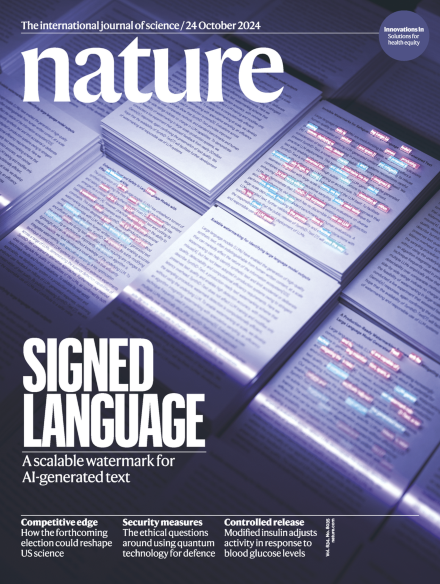
In today's internet landscape, the content generated by large language models (LLMs) is ubiquitous, and these models can mimic human-like tones and writing styles, making it difficult to discern whether the text is human-authored or AI-generated.
This issue might be addressed through watermarking technology.
Adding watermarks to images and text presents unique challenges.
When watermarking images, the human eye's ability to distinguish similar colors is far inferior to that of machines—after all, to machines, these different colors are merely different numerical values. The following animated image shows multiple images with and without watermarks. Can you spot the watermarks?
For text, which is presented in a sequential format, both humans and machines can clearly see all the information. So, how do you watermark text?
To make AI-generated text more identifiable, Google DeepMind has created SynthID-Text, which is now open-sourced through the Google Responsible Generative AI Toolkit.
Paper Link: https://www.nature.com/articles/s41586-024-08025-4
Open Source Link: https://github.com/synthid-text
SynthID-Text is a production-ready text watermarking solution that maintains text quality while achieving high detection accuracy, with minimal latency overhead. Additionally, SynthID-Text does not affect LLM training; it only modifies the sampling process. Watermark detection is computationally efficient and does not require the use of the underlying LLM.
SynthID-Text builds on previous watermarking components and introduces a new sampling algorithm called Tournament Sampling. SynthID-Text can be configured to be non-distorting (preserving text quality) or distorting (sacrificing text quality for enhanced watermark detectability). In both settings, SynthID-Text offers higher detection rates.
For example, for the phrase "My favorite tropical fruit is __," the LLM might use tokens like "mango," "lychee," "papaya," or "durian" to complete the sentence, each with a probability score. When there are multiple tokens to choose from, SynthID can adjust the probability scores of each predicted token to avoid affecting the output's quality, accuracy, and creativity.
Google conducted a large-scale user feedback evaluation on nearly 20 million responses from real-time interactions with Gemini. The results showed that non-distorting SynthID-Text can maintain text quality. Therefore, SynthID-Text has been used to watermark Gemini and Gemini Advanced. This demonstrates that generating text watermarks can be successfully implemented and scaled to real-world production systems, serving millions of users.
Furthermore, Google offers an algorithm that combines generative watermarking with speculative sampling, allowing SynthID-Text to be integrated into large-scale production systems with negligible additional computational overhead.
However, SynthID-Text currently only handles text as short as three sentences and text that has been cropped, explained, or modified. It struggles with short text, rewritten or translated content, and even answers to factual questions.
Google states, "SynthID is not a panacea for identifying AI-generated content, but it will be an important component in developing more reliable AI identification tools."
Reference Link: [https://www.theverge.com/2024/10/23/24277873/google-artificial-intelligence-synthid-watermarking-open-source